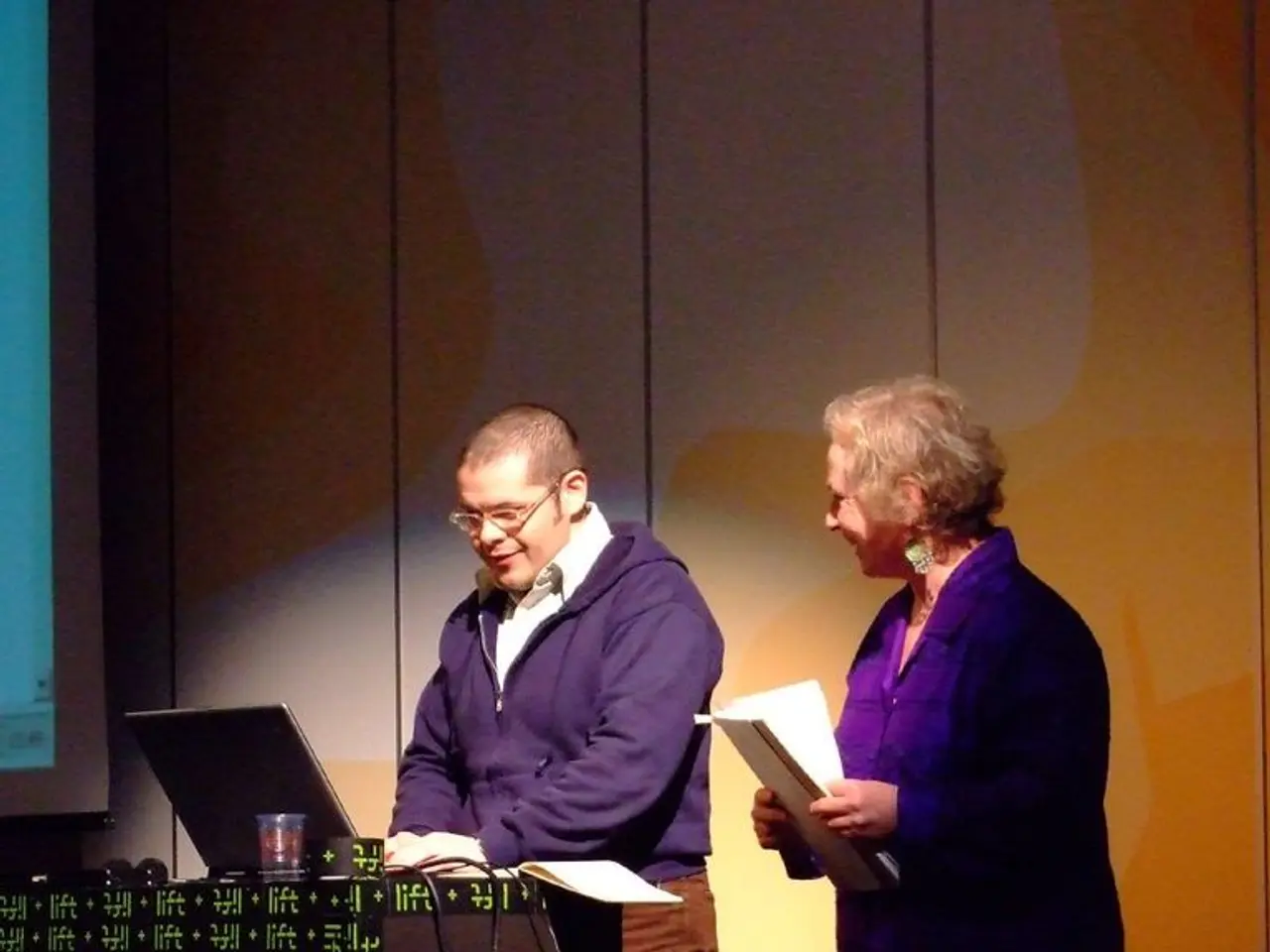Workforce Synergy: AI-Human Teamwork Identified as Important for Future Job Scenarios
In the final three months of last year, the impact of COVID-19 led to a significant decrease in working hours, with a fall of almost 9% compared to the same period in 2019. However, as we navigate through these challenging times, the adoption of Artificial Intelligence (AI) is proving to be a game-changer, offering numerous benefits in the workplace.
AI can streamline processes, making them more transparent and verifiable by logging and inspecting each decision. One of its most appealing aspects is its ability to perform consistently, around the clock, without getting tired or losing concentration. This means machines can take care of time-consuming or mundane work, allowing people to focus on more complex tasks.
However, it's crucial to remember that AI is not infallible. There is a risk of bias being adopted in AI decision-making, particularly in CV screening. To mitigate this, it's essential to add context and sensitivity in these situations. People generally prefer to interact with other people rather than machines, even in work settings. Therefore, it's important to approach AI as an enhancement to human work, rather than a replacement for humans.
The rapid growth of AI adoption requires continuous adjustments to existing regulations and laws to ensure ethical use. Forty percent of workers enhanced their digital skills during the pandemic, indicating a willingness to adapt to this new technology.
AI can generate data and insights to learn and discover new things from that data. When integrated effectively into the workplace, AI can augment human input, reduce errors, and promote collaboration. Key practices and considerations include:
- Augmenting human roles and automating routine tasks: AI excels at automating repetitive, administrative tasks, reducing human error and freeing up employees to focus on higher-level, strategic, and creative work.
- Maintaining humans in the loop: Human oversight is essential to preserve human connection, empathy, and accountability, particularly in sensitive areas such as HR and employee relations.
- Open communication and training: Organizations should start transparent conversations about AI’s role, reassure employees that AI is a tool for assistance rather than replacement, and invest in upskilling staff in data literacy, ethical AI use, and strategic capabilities.
- Choosing the right tools and partners: Selecting AI solutions with robust support for ethical implementation and ongoing guidance helps ensure effective deployment and alignment with organizational values.
- Clear ethical guidelines and governance: Defining explicit policies for responsible AI use—covering decision-making, employee monitoring, and data privacy—prevents misuse and bias.
- Regular auditing and bias mitigation: Continuous monitoring and evaluation of AI tools are critical to detect and correct algorithmic bias and unintended consequences.
- AI as collaborators (“cobots”): Treating AI as collaborative partners encourages a culture embracing AI-enabled innovation and shared accountability.
- Addressing isolation and bias concerns: By preserving human roles in interpersonal interactions, fostering dialogue, and emphasizing ethical standards, organizations can reduce the risks of isolation and discrimination linked to AI implementation.
In conclusion, effective AI integration requires a balanced approach that leverages AI’s strengths in automation and error reduction while safeguarding human values, ethical standards, and collaborative culture. Organizations that focus on transparency, training, careful tool selection, and continuous oversight will achieve a synergistic partnership between humans and machines in the workplace.
Moreover, it's important to remember that AI can still be biased, as the technology can be manipulated to discriminate against certain demographics. Recruiters can focus on delivering a differentiated service with a personal human touch, as AI can automate repetitive tasks.
The use of AI in managing people can lead to increased feelings of isolation and loneliness among workers. However, The World Economic Forum's Future of Jobs Report 2020 found that automation and the recession caused by COVID-19 led to a 'double disruption' scenario for workers, costing $3.7 trillion worldwide. Despite these challenges, the our group recognizes that AI can contribute to thriving economies, competitive organizations, and fulfilling careers. Using AI in recruitment could lead to fairer, more objective practices by reducing human bias.
Over three quarters - 77% - of workers are prepared to upskill or reskill, indicating a readiness to adapt to the changing landscape. By embracing AI in a strategic, ethical manner, organizations can harness its power to drive growth, efficiency, and innovation, while ensuring a harmonious balance between human and machine capabilities.
- The future of work is increasingly intertwined with digital transformation, as AI promises to streamline processes and automate routine tasks, freeing up employees for more complex tasks.
- To prevent potential bias in AI decision-making, particularly in areas like recruitment, it's crucial to add context and sensitivity, and maintain humans in the loop for sensitive areas such as HR and employee relations.
- The accelerated adoption of AI offers opportunities for career development, education, and self-development, as workers continue to upskill and reskill in response to this new technology.
- AI can generate data and insights to promote workplace-wellness and health-and-self-wellness by identifying trends and patterns that human eyes might miss, thus helping organizations to create more transparent, equitable, and productive workplaces.
- The ethical use of AI requires continuous adjustments to existing regulations, governance, and guidelines, ensuring technology is not just a tool for automation but also a collaborator for augmenting human roles and promoting a harmonious balance between human and machine capabilities.




